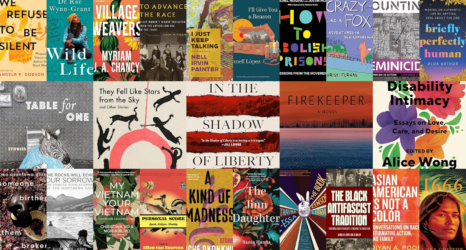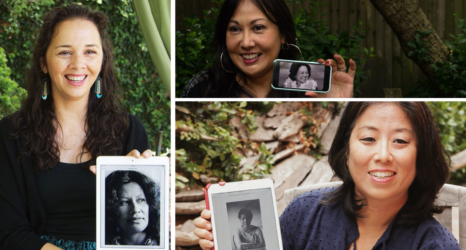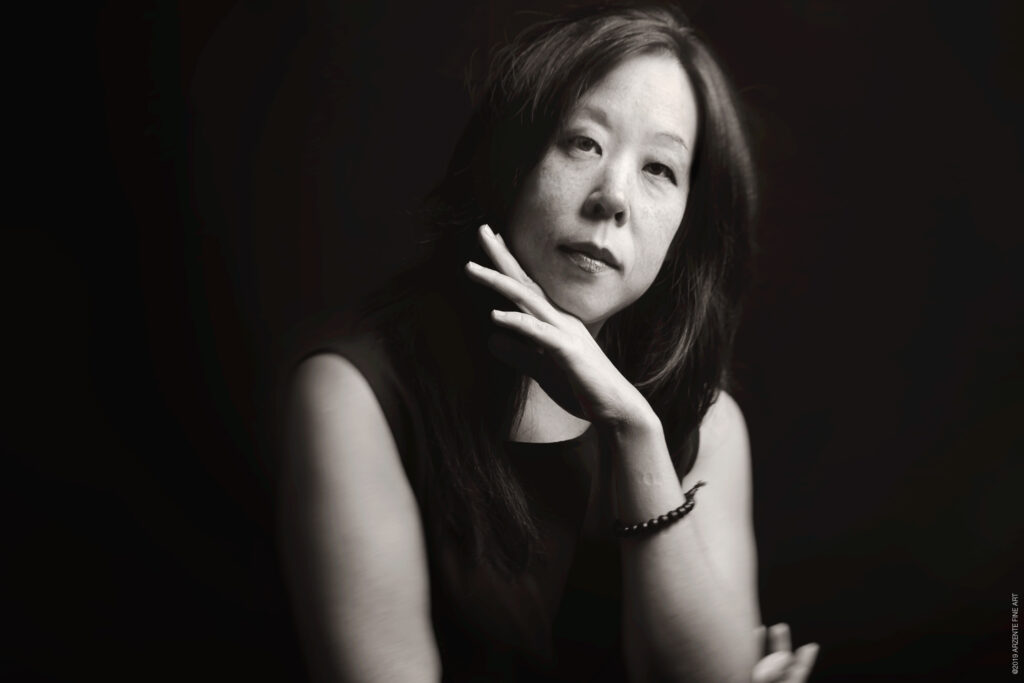
Shin Yu Pai is a multidisciplinary artist who has returned to her primary practice as a poet in her 11th book and collection, Virga—a term also defined as rainfall that evaporates before reaching the ground.
Virga brings together layers of Pai’s identities as a poet, Taiwanese American, mother and wife, amid joy, grief, love and loss, all within the current socio-political landscape. The book is also a huge first for publishing poetry press Empty Bowl: It marks the first time in 45 years the press is publishing a book from a female Asian American author.
Shin Yu spoke to Ms. writer Shanta Lee Gander about this milestone and what it means to have a room of one’s own as a creative and Asian American woman in this current moment.
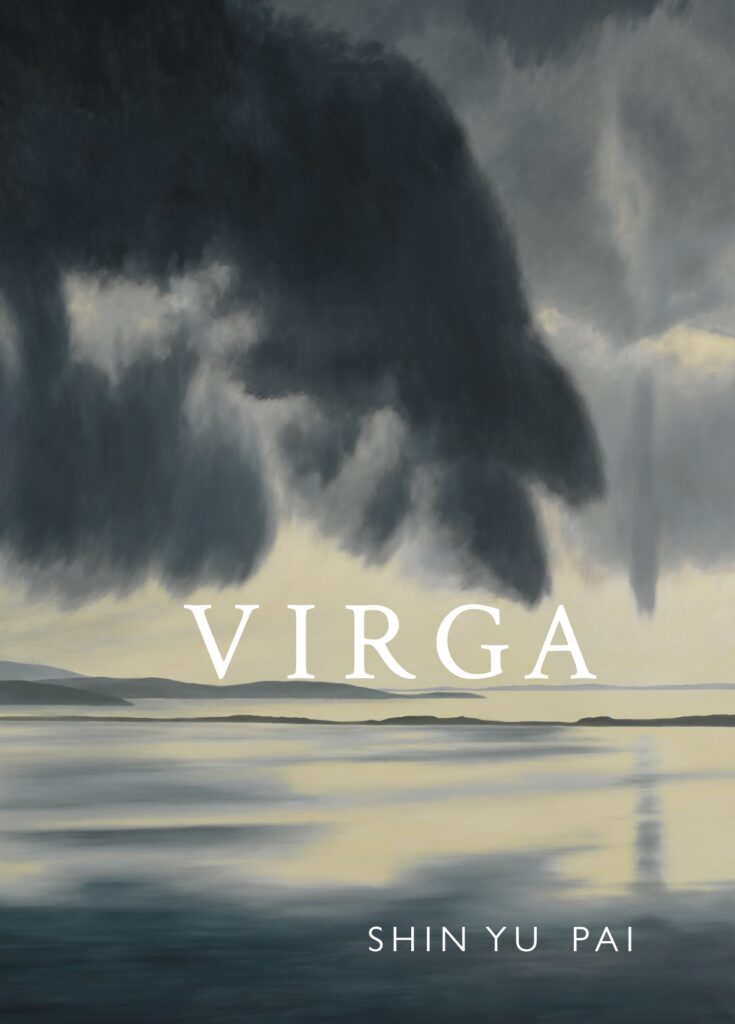
Shanta Lee Gander: You are a multidisciplinary artist through your creating, your photography, your writing—also the different media you use in presenting your written work. What found you first?
Shin Yu Pai: My father gave me a camera when I was in second grade and I wrote poems from an early age. When I went to college, I focused on my studies as an English major and writing. But I completed my MFA program at an art school because I wanted the opportunity to practice photography at a deeper level and learn how to print both black and white and color images. As cameras evolved from analog to digital, I resisted making the shift. I still shoot with film.
Gander: Do you find that these different forms talk to each other?
Pai: Sometimes, if an idea is not ready to emerge in language, I explore the concept by taking photographs, or through some other approach. If I can’t figure out how to revise a poem, I might take it apart and lay it out like an expanded book art project where I can see it anew. This allows me to see the structure in a different way than on a single page and can reveal something to me about what the poem wants to be. These different approaches talk to one another.
“Sometimes, if an idea is not ready to emerge in language, I explore the concept by taking photographs, or through some other approach.”
Gander: Your book, Ensō, feels like it was showing or revealing the process—while Virga brings us into a range of the spiritual/meditative, and interior. What was the experience like of putting this collection together?
Pai: There have been a lot of shifts and changes in my creative practice over the past couple of years. I birthed a child seven years ago, which completely changed the way that I make work and the speed with which I put together a collection and relate to time.
Ensō is a collection of work that spanned 20 years of practice and took another three years to put together, with various visuals and audio. Virga, in contrast, happened quickly. The publishing experience of Virga was different too. I’ve always had an interest in Empty Bowl, a Washington-based press that has been around since 1976 and is a proponent of literature related to Buddhist thought and Chinese poetic masters. I felt a deep affinity for the work that they’ve done so I sent the manuscript to them this past January. At this time I first got a response, I thought it would take them six months to get back to me. Then the Atlanta shooting happened.
That incident highlighted an ongoing anti-Asian sentiment in this country and suddenly, it felt like there was a conversation that was more ready to happen. I was offered a publication date in time for Asian American Heritage Month, but I wanted more time to put together a plan for the book.
Virga felt very relevant for the moment. It’s characterized by themes of grief, grieving and loss before and during pandemic, as well as reflections on caring for a young child. Engaging with them around difficult topics that center what’s happening in the world, as well as sitting with the sense of unsafety created as a result of what’s happening to Asian Americans. Putting this book into the world helped me to get to the other side of that racial grief.
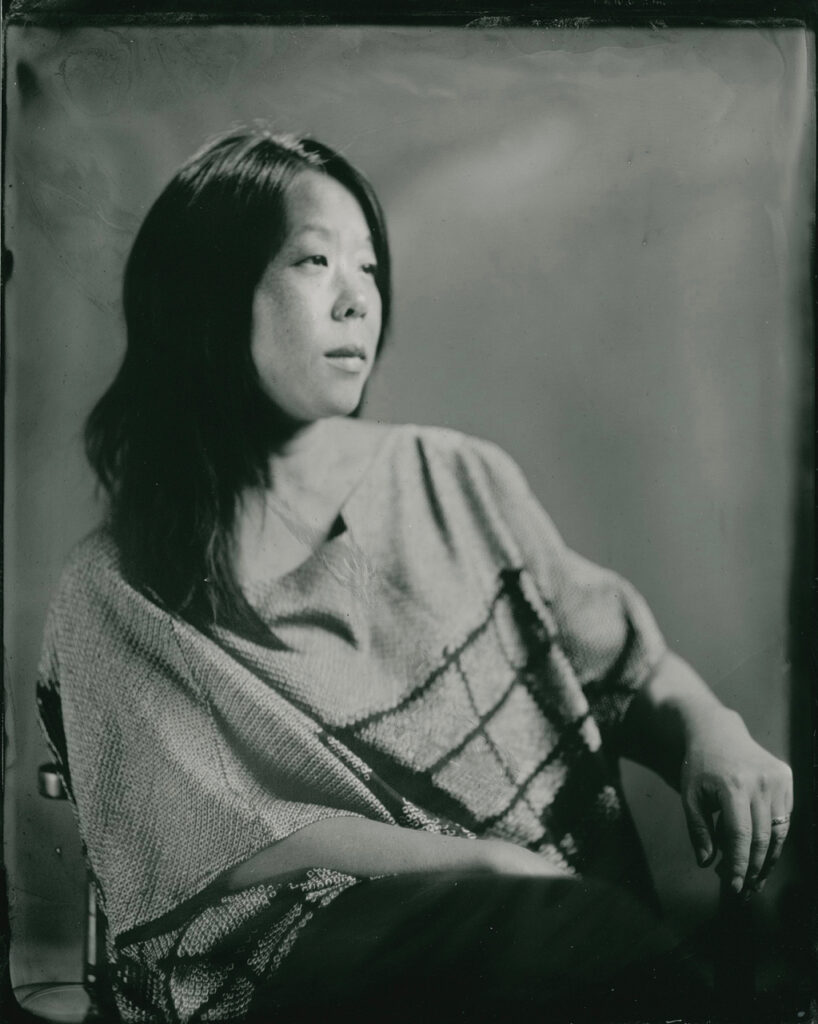
Gander: In one of your 2018 essays, you said, “Mothering required integrating the many identities of being a woman, daughter, wife and artist—but a whole other series of internal shifts were beginning to take place.”
Tell me more about this negotiation of identities? Do you feel social pressure to adhere to one identity over another? If so, how do you disrupt or engage with it?
Pai: Being an Asian American woman, I have struggled with what readers or the literary community expect of me as a writer. It felt like there were certain kinds of topics that I should focus my work around to be acceptable versus the things that I wanted to write about.
The people who were excited about my earlier work were an avant-garde, white literary establishment. I didn’t feel like I necessarily fit in with other Asian American writers who were writing more directly about issues of race and belonging. The literary community is not necessarily my ideal community or readership.
But what happens when people who may or may not look like you or your peers don’t embrace your work or understand it? The sense of not belonging replicated itself in a creative context. It’s been a tension for me and I’ve sometimes asked myself: Who are my audiences? How do I speak to them?
The question of what my identities are is something that has evolved over a long period of time, given that I am 20 years deep into my practice. I am Asian American, but I grew up working class in Riverside, California, an area that was primarily a mixed-race community. There weren’t that many Asian Americans, let alone Taiwanese Americans.
In the last seven, eight years, with the birth of my son, I’ve really tried to integrate this identity of being a mother into my work as an artist—how I see has been shaped by this shift in becoming a parent. My different identities have led me towards pushing my work into different directions allowing me to be as expansive as I wish to be in my humanity and my wholeness as a person.
“In the last seven, eight years, with the birth of my son, I’ve really tried to integrate this identity of being a mother into my work as an artist—how I see has been shaped by this shift in becoming a parent.”
Gander: Sometimes there is a fear for female artists, especially the ones who are mothers, that they might be often overly-linked to the identity and act of mothering—something, of course, that is never thought of when we think of male artists who are also parents. Yet, you have talked about motherhood as being an expansion. Can you say more?
Pai: Before my son was born, I remember running into a well-known painter on the streets of Seattle, who is a colleague of mine. We met at a residency when I was 27 years old and my first book was on the verge of coming out in the world. I was seven months pregnant when we bumped into each other, and my appearance came as a shock. He took one look at my body and said “I know what’s next for you! Dirty diapers!” I felt like, I can’t believe you’re saying this shit to me.
My life and my art does not end because a child is now joining me on my journey. My commitment to my art has never wavered.
Gander: I have a question regarding “Upaya“—one of your poems which is associated with one of the four noble truths in the Buddhist practice: namely, “right speech.“
When you think of the concept of “right speech,” what do you feel that means in terms of your making right now? How do you continue to think of “right speech” in America right now as a creative?
Pai: As the daughter of immigrants, I lost much of my cultural language of origin. My relationship to language is complicated. In its simplest terms, right speech is the idea of the words we use and how those words interact with and affect others. There is a mindful awareness that goes into thinking about a person’s encounter with language. It’s shaped and crafted, based on what a person needs to hear right now.
Right speech is tricky because in writing a poem, you’re typically writing a poem for more than an audience of one. But the words that I use are chosen to resonate for many. Right speech is a powerful form of enactment in the world and it is a very important facet in my writing.
With regard to how I think of right speech in the world that we’re living in, the last four years and our last political administration destroyed the integrity of language. It manipulated truths and corrupted the meaning of language. We had a president that didn’t read books or literature compared to our current president, who quotes Yeats.For the last year, there’s been a lot of very damaging hateful language and rhetoric around Asians and Asian Americans with regard to COVID and the pandemic. These things have been the opposite of right speech and have been tremendously damaging embedding themselves in the national consciousness which has resulted in the escalating anti-Asian hate crime that we have seen over the past 14 months. I don’t trust a lot of the language that I see or hear. It’s important to interrogate it.
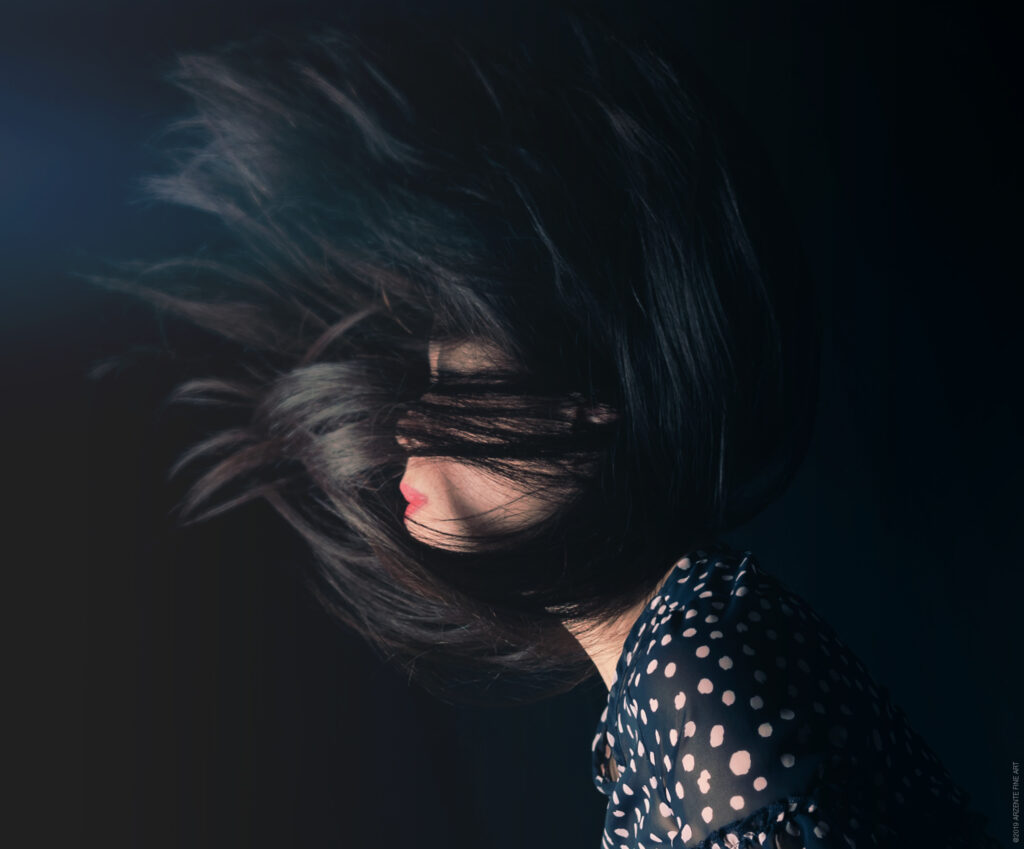
Gander: In exploring your career as an artist along with this new collection, I could not help thinking about Virginia Woolf’s concept of A Room of One’s Own. Woolf poses the idea that women need access to resources, especially space, to create.
Speaking of space, this is the first time Empty Bowl in its 45-year history is publishing an Asian American woman. How did this come about?
Pai: Empty Bowl started out in 1976 by publishing anthologies under a group editorship of writers who were involved in environmental conservation. They published anthologies that featured Native American poetry in translation and early work by writers like Joy Harjo, Carolyn Forche, Sharon Doubiago and Judith Roche.
Judith and Sharon both published poetry collections with Empty Bowl. Translations of Tang Dynasty poets were also included in these anthologies and later several books of translation by Red Pine of Buddhist texts. In 1986, Michael Daley edited an anthology for EB that focused on immigration and diversity—poems and essays about Central America. The book included work by Rosario Murillo, Zoe Anglesey, Daisy Zamora, Mercedes Durand and other Nicaraguan and Salvadoran authors. I was the first Asian American, as well as the first Asian American woman to offer the press a manuscript.
I don’t believe it was ever an intention of the press to exclude writers. But over decades of building a catalog of writers, patterns and gaps become apparent. It was the poet and translator Mike O’Connor, a fellow Naropa alum, who first introduced me to the press in 2008 and told me about their work. Editorship of the press changed hands a few years ago and ended up back under the leadership of Michael Daley, a poet who I did not know. Mike O’Connor passed away last year and part of me mourned not having a chance to work with him as my editor on a book with Empty Bowl. I sent Michael my manuscript for Virga with some encouragement from my colleague Lauren Grosskopf, who runs Pleasure Boat Studios, another local small press.
I asked Michael to be an ally for me by reflecting on the press’s publishing history and where I fit into that. Making that request made me anxious because I was asking somebody who has power in deciding to publish my book, to make a significant statement as an ally.
The topic of race can be a landmine for people. Many people don’t feel safe talking about it. If it’s being pointed out that I am the first Asian American female writer in the history of the press, I’m not making an accusation of racism or sexism. I’m stating a fact.
But their choice to publish my work is not self-conscious or casual. My themes and my work speak to the larger aesthetics and philosophy of the press’s interests AND I’m Asian American AND I’m a woman. And it’s overdue.
Gander: After the incidents in Atlanta and with hate crimes increasing against Asian Americans, do you feel like activism is failing right now and if it is, how do you see it potentially contributing? I am especially thinking of your lines within your poem, “White Savior Industrial Complex.”
Pai: Activism has its limitations in that people feel a lot of pain and guilt and activism provides a remedy. People are motivated and activated to do something about feeling bad to regulate their discomfort. And so they do that by engaging in activism, which is different than committing to activism. You might go out and help at a food bank or march on the weekend, you go through the motions, but the commitment to the deeper mindset of self interrogation may not always be there. You have to radically interrogate your own position. There’s a way to kind of bypass that by being an activist, by naming yourself an activist, you can say you did something.
I live in Seattle, where we start our meetings with land acknowledgments and pronouns. There are actions and protocols that people can go through to feel like they are fighting the good fight but that can also ring of virtue signaling or performative activism. People were so proud of participating in the Women’s March with their pussy hats. But they didn’t stop to consider how that activism, which didn’t include or communicate with the communities that they disrupted, fucked up the local economy on what is usually the busiest weekend for Asian-owned businesses preceding the annual Lunar New Year celebration, due to the protesters’ planned route.
How can activism contribute to this moment? It can contribute to this moment by helping people reimagine who they want to be.
What does it mean to be your best self? Starting with this question before you can do anything in the world.
Gander: What advice would you give to other female creatives advocating for themselves? How can institutions play a role in being more inclusive?
Pai: The approach I take is one that I feel comfortable with culturally for who I am and how I lead. I take the strategy of trying to create curiosity in others—an appreciative inquiry approach that can lead to self discovery.
Much of this work is really about creating a space of safety for individuals and organizations to self interrogate. That scaffolding has to be created in a way that is skillful. My approach is to not be entirely direct. Others might get faster results by being direct, but I look the way that I do. There are certain expectations of how Asian women comport themselves in the world as agreeable, cheerful and non-threatening. If you are direct and perceived as threatening, you transform into a dragon lady.
This question of creative space became a lot more complicated when I became a mother. It’s easier to cross over into those spaces once your child gets older. One thing I see the arts community trying to address is to create more residencies which fund women artists who are mothers. They create structures where you bring your child with you, and they provide child care. Or you can bring your spouse as caregiver. It’s a minority of residences that currently offer this kind of model. Having been to a few residencies in my early career, I noticed many young writers in their 20s without children, unencumbered enough to do the residency hopping circuit. On the other end of the spectrum, I encountered many older artists whose children were grown.
We started this as a conversation about space but I think what we’re really talking about is resources. Having worked in grantmaking, it’s been interesting to see shifts in funding priorities—I see more grants available now to BIPOC artists, artists with disabilities. Occasionally, I see grant applicants who are parents asking for funding that could cover the costs of child care so that the artist can produce work.
I’ve also seen a rise in collectives that use their power to elevate artists from underrepresented backgrounds that were marginalized in the past. The question for all of these cultural affinity groups is how daring, inclusive, or far reaching can they continue to be within a landscape that is characterized by a mindset of scarcity and competition, particularly as they seek to align themselves with mainstream acceptance within the academy to leverage their soft power to secure professional opportunities that secure positions of power and influence for their members.
For organizations to do their part, they need to be incredibly courageous, be prepared to make mistakes, and make a commitment to doing less harm while acknowledging the ways in which they have operated. In some cases, this involves recognizing how white supremacy values have carried their work along and how this is a time of needing to radically dismantle those structures to share power.
Up next:




